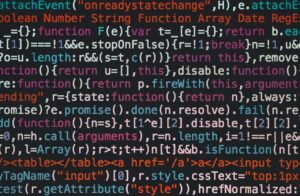According to Statista, there were around 255 billion mobile app downloads in 2022 globally. But how many of the downloaded applications are still used? The term ‘mobile app retention rate’ defines user loyalty to your application, so the more users return to your mobile app after the first install, the higher the retention rate. As per the previously mentioned mobile app usage overview by Statista, the retention rate of Android apps after 30 days from installation accounts for just 2.6%. The situation with iOS apps is better, with a retention rate of 30 days from the installation approximately 43%.
Experienced mobile app developers consider application performance, along with its value to the users, to be one of the crucial factors attracting users and making them return to the mobile solution. Here are our top eight best practices you can apply during the mobile app development project to ensure outstanding user experience and a higher retention rate.
1. Choose the application type wisely
There are several types of mobile applications, from native, multiplatform, and cross-platform applications, to hybrid and progressive web apps, each with its own performance capacities, which you should take into account during app conceptualization. For instance, if you want to build a complex app that requires top performance and smooth UX/UI on a particular OS, you should opt for native applications.
At the same time, if you need satisfactory performance and quick deployment across multiple platforms, cross-platform app development will be the most suitable choice. Though offering less flexible UX/UI, cross-platform applications can ensure fast ROI and are easy to maintain.
2. Carefully plan application architecture
The architecture of your future mobile application is the backbone of its high performance, smooth functioning, and great user experience. In practice, mobile app architecture planning includes defining all application’s modules and components, such as data and presentation layers and business logic, and outlining how they will interact. The architecture should be designed with scalability in mind to ensure stable performance under great unexpected loads and avoid architectural issues as the application evolves. To accelerate the development process, some companies opt for architectures based on Mobile Backend-as-a-Service (mBaaS) solutions that provide pre-built and scalable back-end services. MBaaS software helps focus more on the front-end and user experience, leaving server-side programming, infrastructure management, and back-end maintenance to third-party off-premises servers.
3. Follow clean coding practices
Writing clean and well-structured code can ensure mobile applications’ outstanding performance. Following code conventions, best practices, and design patterns ensures smooth application functioning and makes your code readable and easier to maintain by future support teams. The development team can also minimize the use of resource-intensive libraries or frameworks and run regular code analysis and profiling to track memory usage and hot paths in the code and identify performance bottlenecks. Apart from that, adopting continuous integration (CI) practices will prevent merging code versions with mistakes.
4. Optimize images
High-quality images can take up the lion’s share of the application loading time. Nevertheless, there is no need to sacrifice the quality of images to reduce the loading time. Instead, optimize images by finding a balance between using vector images and resizing or compressing pictures, which helps reduce loading time without sacrificing image quality. Additionally, consider adopting hardware-accelerated imaging, which shifts visualization to the graphic card, freeing up CPU resources for other tasks. Implementing lazy loading for specific image components and utilizing caching can further enhance app performance, ensuring faster loading times and smoother functionality, even in situations with unstable network connections. If your application involves enhancing visuals with additional text, ensure that the process of adding text to an image is also optimized to maintain overall performance.
5. Ensure efficient data management
To ensure smooth application functioning, you should aim to optimize the storage of data and its amounts travelling back and forth from users to the server. As with image optimization, you can implement caching mechanisms to store frequently used data locally, thus reducing the need to transmit data over the network every time and improving the app’s response time. Adopting data compression techniques can also reduce the size of data transmitted over the network and accelerate data transfer.
6. Run continuous testing and track performance metrics
One of the best ways to optimize mobile application performance at the development stage is to conduct regular and thorough testing before the release. For example, load and stress testing, as well as testing your app under different network conditions, including slow and unstable connections, will help you detect anomalies in the application’s performance.
You can also monitor and measure key performance metrics such as response times, latency, throughput, memory usage, and battery consumption to track patterns and timely address potential performance issues. Functional and usability testing will also help ensure the application’s user experience is smooth and meets all functional requirements. In addition, we recommend testing the application on real devices, as this can help identify performance issues that might not appear on simulators or emulators.
7. Ask for early feedback
Gather feedback on your application’s performance and functioning during beta and user acceptance testing. After the application’s deployment, continuously monitor user feedback and reviews on performance-related issues and address them promptly.
On a final note
Despite a large number of mobile app downloads, user loyalty remains a challenge, and poor application performance is a common stumbling block. Paying enough attention to the application’s architecture, choosing the right platform for development, adhering to coding conventions, optimizing images, threads, and API performance as well as continuously testing the application will help your team build a robust mobile application with flawless performance and outstanding user experience.


